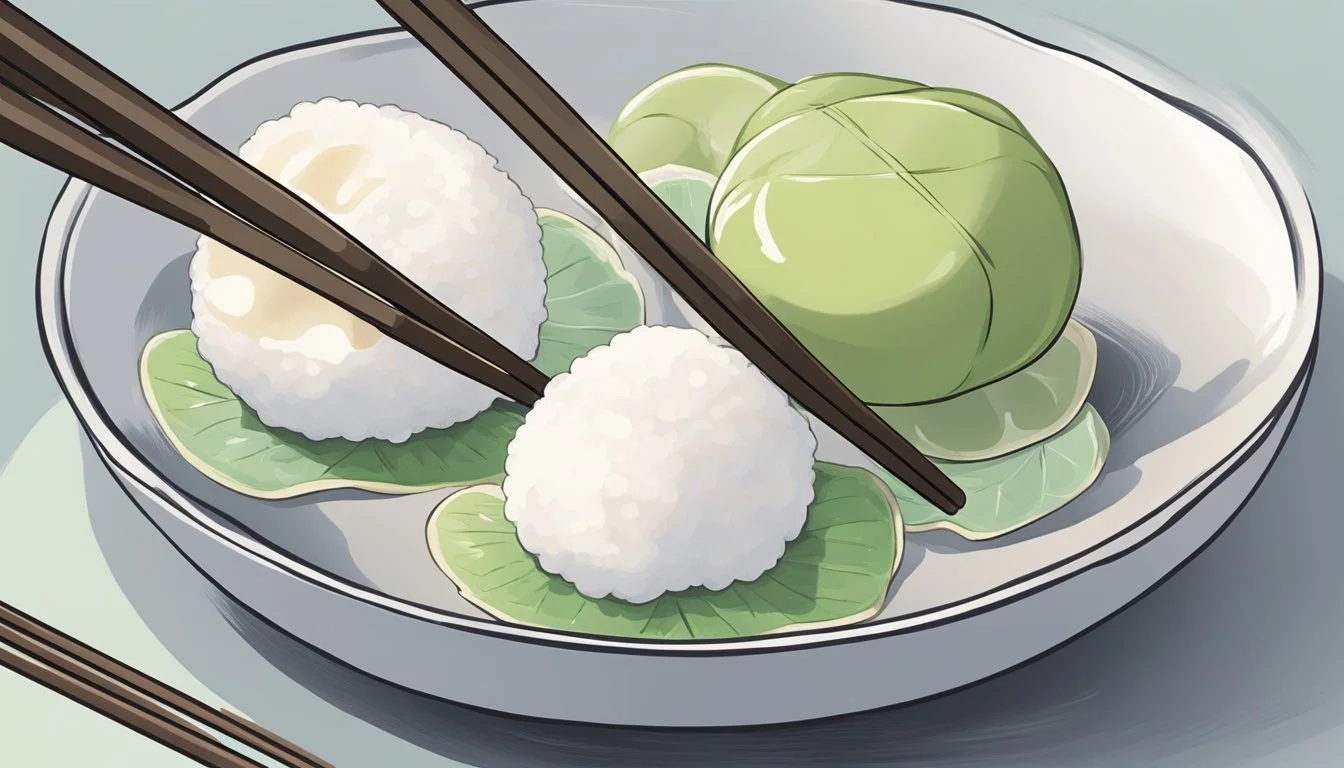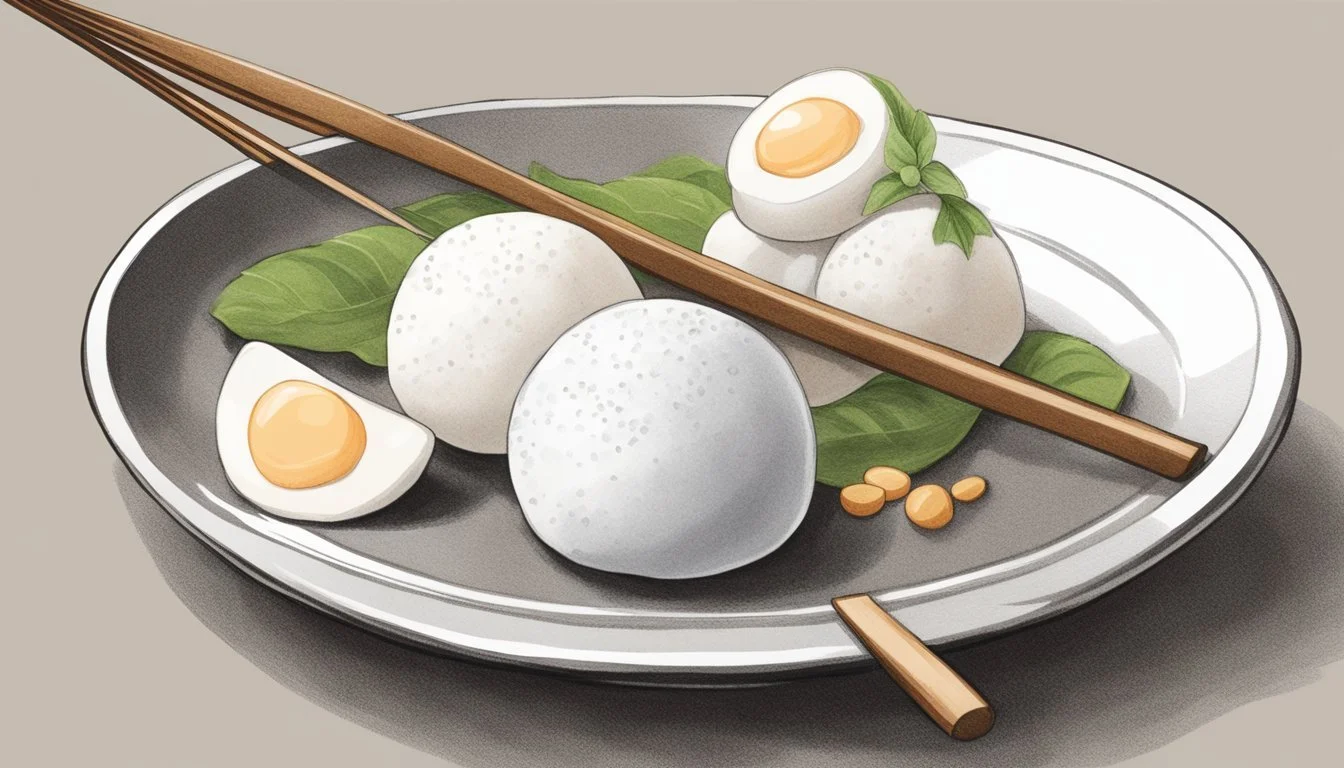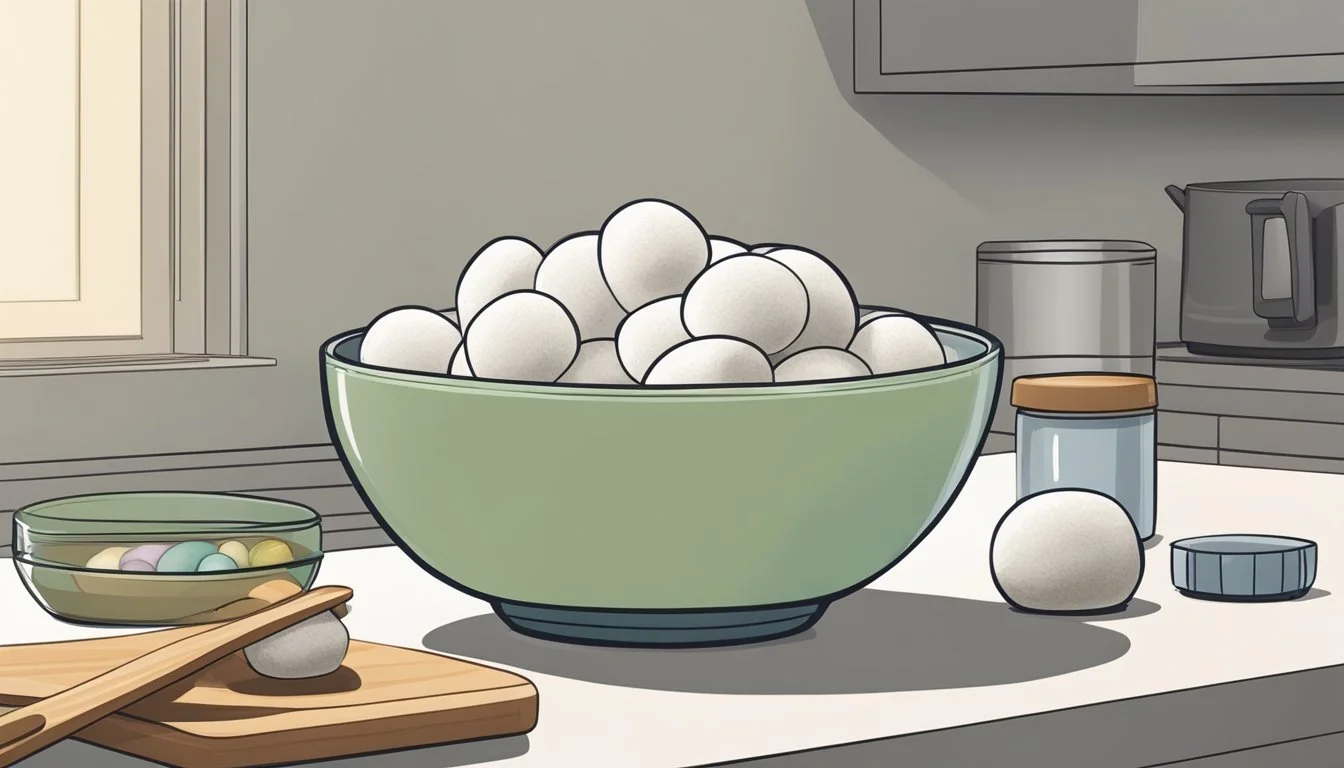How do you eat mochi?
Simple Steps for Enjoying This Japanese Treat
Mochi, a Japanese rice cake, is celebrated for its unique texture and versatility in various culinary applications. Made from glutinous rice flour, it is traditionally molded into a shape that is soft, chewy, and satisfyingly sticky. This treat, often associated with Japanese festivities and new year celebrations, can be enjoyed in numerous ways to suit different tastes and occasions.
Eating mochi can be as simple as consuming it in its plain and original form, or as adventurous as incorporating it into more complex dishes. It can be found stuffed with sweet fillings like red bean paste, ice cream, or even fresh fruit, offering a delightful contrast between the soft mochi exterior and the sweet, flavorful filling. Savory versions are less common but just as scrumptious, often including fillings like seasoned meat or cheese.
The preparation methods for mochi are just as varied. It can be toasted until it puffs up and gets a golden brown tint, adding a satisfying crunch to its surface while maintaining a gooey interior. Mochi may also be boiled, pan-fried, or microwaved, and is frequently added to soups such as Ozoni, imparting a distinct texture to the dish. Whether served in a sweet or savory context, mochi provides a unique edible experience that can be tailored to a wide range of culinary preferences.
History and Significance
Mochi has deep cultural roots in Japan, serving as a traditional food that symbolizes good fortune, particularly during the New Year. Its preparation is steeped in long-standing customs that reflect the country's rich heritage.
Origins in Japan
Mochi traces its beginnings to ancient Japan. Archaeological evidence suggests that its homeland production became widespread in the 6th century, aligning with the advent of earthenware steamers. Originally, red rice served as the main ingredient in mochi, but eventually, mochigome — a short-grain glutinous rice — became the standard. The traditional method of making mochi, called mochitsuki, involves steaming the glutinous rice and then pounding it into a sticky, elastic dough. Over time, mochi gained prominence across Japan, leading to a variety of regional specialities.
New Year Celebrations
In Japanese culture, mochi plays a vital role in New Year celebrations. It is commonly used in the creation of kagami mochi, two round mochi discs stacked with a bitter orange (daidai) on top, symbolizing the continuity of the family and the coming of good fortune. During the New Year, many households engage in mochitsuki, the communal event of mochi pounding, which is believed to bring good luck and prosperity. Beyond its significance in rituals, mochi is also enjoyed in various forms, ranging from sweet fillings to being included in savory meals during the celebratory season.
The Basics of Mochi
Before diving into the culinary experience of eating mochi, it’s vital to understand what mochi is, the key ingredients that make up this unique food, and the distinctive texture that defines its appeal.
What is Mochi?
Mochi is a traditional Japanese rice cake that has made its way into global cuisine due to its versatility and unique texture. It is created from mochigome, a type of short-grain glutinous rice. This rice is soaked, steamed, and then pounded into a sticky, pliable dough. Mochi can be enjoyed in various forms, from sweet treats to savory dishes.
Key Ingredients
The primary ingredient in mochi is glutinous rice flour, derived from mochigome. The term "glutinous" refers to the sticky and glue-like quality of the rice, which is gluten-free despite its name. Water is the other critical component, transforming the flour into a workable dough. Occasionally, additional ingredients like sugar or matcha (green tea powder) are added to enhance flavor and color.
Ingredient Purpose Notes Glutinous Rice Base for mochi dough Also known as "sweet rice" Water To form and soften the dough Essential for the desired texture Sugar Adds sweetness (if desired) Used for sweet mochi varieties Matcha For flavor and color Provides a distinct green hue
The Texture of Mochi
The texture of mochi is central to its identity: it is both chewy and elastic. This unique mouthfeel comes from the high starch content of glutinous rice. Mochi's consistency is a balance between softness and resilience, creating a satisfying chewiness that is not found in many other foods. It can range from pillowy soft when fresh to slightly firm when cooled. Properly eating mochi involves savoring its distinctive texture, which is enjoyed in a plethora of ways across various dishes.
Traditional Mochi Varieties
Mochi, a Japanese rice cake made of mochigome, offers a diverse range of flavors and preparations. Each variety provides a unique taste experience, often incorporating sweet fillings or savory toppings.
Daifuku
Daifuku is a type of mochi that envelops a sweet filling, most commonly anko (red bean paste). It frequently contains a whole strawberry, creating a popular variety known as ichigo daifuku.
Zoni
Zoni, also referred to as ozoni, is a traditional Japanese soup that features mochi as a key ingredient. Typically consumed during the New Year celebrations, this dish combines mochi with a variety of ingredients such as vegetables and meat in a savory broth.
Kinako Mochi
Coated in a sweet mixture of kinako (roasted soybean flour) and sugar, kinako mochi is a simple yet delicious treat. The powder adds a nutty flavor and a distinctive texture contrast to the chewy mochi.
Sakura Mochi
Distinguished by its pink hue, sakura mochi is a seasonal treat enjoyed during spring. It is filled with anko and wrapped in a pickled sakura leaf, which imparts a subtle, fragrant flavor.
Other Traditional Types
There is an array of other traditional mochi varieties, such as kusa mochi flavored with mugwort (yomogi), giving it a herbal note and a green color. Warabi mochi, made from bracken starch, has a jelly-like consistency and is often served with kinako. Shiruko, or zenzai, is a sweet red bean soup served with pieces of mochi. Each variant offers a unique taste and textural experience, reflecting the versatile nature of this traditional Japanese confection.
Modern Adaptations
As mochi continues to captivate global tastes, chefs and foodies are crafting modern adaptations that have propelled this traditional Japanese treat into a contemporary culinary marvel.
Mochi Ice Cream
Mochi ice cream has soared in popularity, offering a fusion of creamy ice cream encased in a soft mochi shell. This treat commonly features flavors such as strawberry, matcha, and mango. With a chewy exterior and a core of ice cream, they're often served as bite-sized balls, perfect for a sweet indulgence.
Flavored Mochi
The evolution of mochi includes a variety of unique flavors. Beyond traditional sweet fillings, one can find mochi infused with contemporary tastes like chocolate and strawberry. These flavors complement the mochi's sticky rice dough, providing a fresh twist on a classic snack.
Innovative Mochi Snacks
The versatility of mochi dough has led to innovative snacks that keep the essence of mochi while pushing the boundaries of form and taste. From mochi doughnuts to mochi waffles, these modern adaptations maintain mochi's signature chewiness while incorporating western influences into its texture and flavor profiles.
Preparing Mochi
Mochi preparation ranges from traditional methods, which involve a meticulous process to ensure the right texture, to modern cooking techniques that accommodate convenience without compromising the treat's distinctive qualities.
Traditional Preparation
Traditionally, mochi is made by soaking glutinous rice overnight, then steaming it and pounding the rice until it becomes a sticky, elastic dough. This dough is then formed into shapes and can be filled with sweet bean paste or rolled in sugar to enhance its flavor. The process is labor-intensive but crucial for achieving the authentic texture and taste of mochi known in Japanese sweets.
Modern Cooking Methods
Modern cooking methods for mochi include toasting, microwaving, and boiling. To prepare kiri mochi, one can place it in a toaster oven for 5-10 minutes until it puffs up and becomes slightly golden, indicating a nice toast on the surface. Alternatively, one can microwave mochi by lightly dampening its surface, then heating it for a couple of minutes until it softens. Both methods are quick and cater to contemporary kitchen conveniences while still respecting the essence of Japanese cooking.
Consuming Mochi
Mochi is a versatile Japanese rice cake known for its chewy texture and is often incorporated in various dishes, from snacks to desserts. Proper consumption techniques and suitable pairings can enhance the mochi eating experience.
How to Eat Mochi
To enjoy mochi, one should take small bites and chew slowly to savor its unique texture and avoid choking, as mochi is notably sticky. It is not recommended to bite directly into large pieces for this reason. Traditional utensils such as wooden or plastic are preferred over metal to maintain the integrity of mochi's delicate surface.
Accompaniments and Pairings
Mochi pairs well with various accompaniments that complement its subtle sweetness:
Soy sauce: A light dip in soy sauce infuses a savory taste, especially with grilled mochi.
Nori seaweed: Wrapping mochi in nori adds a crisp texture and oceanic flavor.
Soybean powder: Dusting with soybean powder contributes a nutty, sweet coating to mochi.
Anko (red bean paste): Often used as a filling, anko provides a sweet contrast to the mochi exterior.
Additionally, mochi is also a common component in soups and broths, such as udon or the hearty chikara udon, where it absorbs the surrounding flavors.
Culinary Uses
In the culinary landscape, mochi serves multiple roles:
As a snack, it can be enjoyed plain, toasted, or filled with ice cream.
In desserts, like oshiruko, mochi is enjoyed with a sweet red bean soup.
For savory dishes, it can act as an ingredient in okonomiyaki, providing a chewy texture to the popular Japanese pancake.
Mochi’s adaptability allows it to be a delightful addition to both traditional and contemporary dishes alike.
Cultural and Global Impact
Mochi has made a significant mark both within Japanese tradition and as a beloved culinary export. It is intricately linked to festivals and annual celebrations, and its popularity has spread far beyond Japan's borders, reflecting its adaptability and appeal.
Mochi in Festivals and Rituals
During Japanese New Year celebrations, mochi plays an essential role. Known as a Japanese rice cake, this sticky glutinous rice food item is a key part of osechi-ryori, the traditional New Year meal. It symbolizes longevity and prosperity. Special variations of mochi are also prepared, such as kagami mochi, which is used as a decorative offering to deities, only to be eaten later in a ceremony called kagami biraki. Mochi also plays a role in spring festivals, with sakura mochi being associated with cherry blossom viewing, and bota mochi or ohagi linked to the equinox.
Festivals: New Year, Cherry Blossom Viewings
Rituals: Kagami Biraki Ceremony
Mochi Types: Kagami Mochi, Sakura Mochi, Bota Mochi
Mochi Outside of Japan
As Japanese cuisine has gained popularity, mochi has found a place in many countries beyond Japan. In Southeast Asia, similar sticky rice foods exist, but Japanese mochi stands out for its unique preparation and versatility. Daifuku, a type of mochi filled with sweet red bean paste, has gained international fame as a quintessential Japanese sweet. The rise of wagashi shops around the world has also introduced various mochi types to global palates, with treats such as yatsuhashi and dango becoming familiar sights in international food markets.
Global Spread: Mochi in Southeast Asia, International Wagashi Shops
Popular Varieties: Daifuku, Yatsuhashi, Dango
Safety and Storage
When consuming mochi, especially mochi balls, it is important to be aware of safety precautions due to its squishy and sometimes sticky nature. Proper storage of plain mochi ensures its freshness and reduces the risk of spoilage.
Consumption Precautions
Mochi's glutinous texture, while appealing, presents a choking hazard. They should be chewed thoroughly before swallowing, and it is advisable to cut mochi balls into smaller pieces, especially for children and the elderly. Always supervise children when they are eating mochi to prevent choking incidents.
Storage Recommendations
Storing mochi correctly preserves its soft and squishy texture while extending its shelf life. Refrigeration can keep mochi fresh for approximately one week. For longer storage, plain mochi can be frozen for up to three months. Here are step-by-step instructions:
Room Temperature:
Consume within 1-2 days.
Store in an airtight container to prevent drying out.
Refrigerated:
Place mochi in an airtight container.
Consume within a week for optimal texture.
Freezer Storage:
Wrap individual mochi pieces in plastic wrap.
Put wrapped mochi in a zip-top bag, squeezing out excess air to prevent freezer burn.
Thaw before consumption.
Making Mochi at Home
Making mochi at home is a straightforward process that requires minimal ingredients, mainly glutinous rice flour, and can be made into various traditional forms such as kirimochi or maru mochi.
DIY Mochi Recipes
To start, one must gather the right type of flour; glutinous rice flour, known as mochiko flour, is essential for making mochi. Wheat flour is not used in traditional mochi making. There are a multitude of mochi recipes available, each varying slightly depending on the desired flavor and shape. Abekawa mochi is a variation dusted with soybean flour, and sport mochi typically includes additional ingredients such as yomogi (Japanese mugwort) or anko (red bean paste) for those looking for a more energetic snack option.
The Mochi-Making Process
The process of making mochi is relatively simple. One begins by mixing mochiko flour with water to form a soft dough. Once the dough is ready, it is steamed until it becomes elastic and pliable. Next, the steamed dough is pounded until it reaches the desired consistency. Traditionally, this is done using a mortar and pestle, but it can also be accomplished with modern appliances such as a stand mixer. Finally, the mochi is shaped while it's still warm. Variations like kirimochi (cut mochi) and maru mochi (round mochi) are shaped accordingly, by cutting into rectangles or forming into balls. A frying pan can be used for cooking mochi by pan-frying until it becomes slightly golden, which creates a delightful contrast between the crisp exterior and the chewy interior.
Mochi in Popular Culture
Mochi's influence extends beyond culinary traditions and into the realms of media, entertainment, and symbolic representation within Japanese culture and beyond.
Mochi in Media and Entertainment
Within media and entertainment, mochi has starred in various forms. A notable example includes the animated film "Big Hero 6," where mochi is not only a treat but also the name of an adorable cat. Television shows and anime often showcase characters enjoying or preparing mochi during festivals or as a comfortable snack. Additionally, the pon de ring, a mochi-blend donut offered by Mister Donut, is a fusion of Western and Japanese sweets, reflecting mochi's flexible role in modern confectionery.
TV Shows/Anime: Regular depiction of mochi-eating during festivities
Big Hero 6: A cat named after the beloved snack
Pon de Ring: Mochi-based donut merges Western and Japanese culinary traditions
Mochi as a Symbol
Mochi serves as a cultural symbol that embodies various aspects of Japanese heritage. During the Ohigan period, a Buddhist holiday in Japan, mochi is often made as an offering, symbolizing the connection to one's ancestors. The preparation of mochi, using traditional tools such as the mallet and mortar, connects people to the craft's history dating back to the Kofun period. Unlike mooncake, which is typically associated with the Chinese Mid-Autumn Festival, mochi is connected to a variety of Japanese events, serving as a symbol of the country's culinary diversity.
Ohigan Offering: Mochi as a traditional offering to honor ancestors
Kofun Period Roots: Historical association with mochi-making tools like the mallet and mortar
Culinary Symbol: Represents Japan's rich gastronomic heritage, distinct from similar festival foods like mooncake










